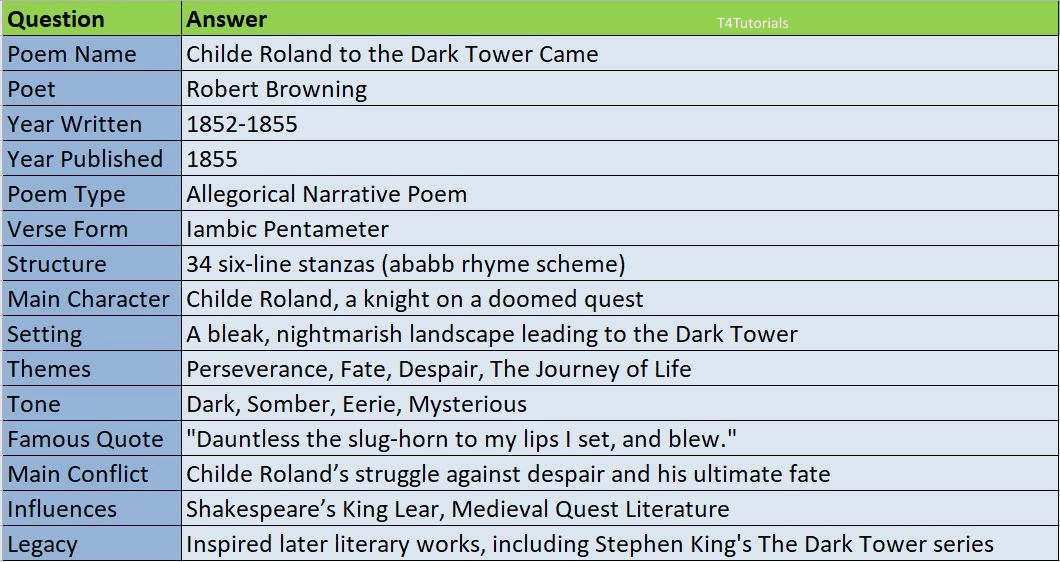Summary:
“Childe Roland to the Dark Tower Came” is a dark and allegorical poem by Robert Browning, first published in 1855. The poem follows the journey of Childe Roland, a knight, as he seeks the Dark Tower, a mysterious and possibly doomed destination. The narrative is filled with surreal and nightmarish imagery, making the knight’s quest seem like a psychological or existential struggle rather than a traditional heroic journey. Along the way, Roland encounters a treacherous landscape, doubts his purpose, and recalls fallen comrades, all of which emphasize themes of perseverance, despair, and fate. In the end, he finally reaches the tower and blows his battle horn, facing his destiny with grim determination. The poem remains an enigmatic work, open to multiple interpretations, from a metaphor for life’s struggles to a commentary on artistic ambition.

Score: 0
Attempted: 0/10
Subscribe
| Question | Answer |
| Poem Name | Childe Roland to the Dark Tower Came |
| Poet | Robert Browning |
| Year Written | 1852-1855 |
| Year Published | 1855 |
| Poem Type | Allegorical Narrative Poem |
| Verse Form | Iambic Pentameter |
| Structure | 34 six-line stanzas (ababb rhyme scheme) |
| Main Character | Childe Roland, a knight on a doomed quest |
| Setting | A bleak, nightmarish landscape leading to the Dark Tower |
| Themes | Perseverance, Fate, Despair, The Journey of Life |
| Tone | Dark, Somber, Eerie, Mysterious |
| Famous Quote | “Dauntless the slug-horn to my lips I set, and blew.” |
| Main Conflict | Childe Roland’s struggle against despair and his ultimate fate |
| Influences | Shakespeare’s King Lear, Medieval Quest Literature |
| Legacy | Inspired later literary works, including Stephen King’s The Dark Tower series |